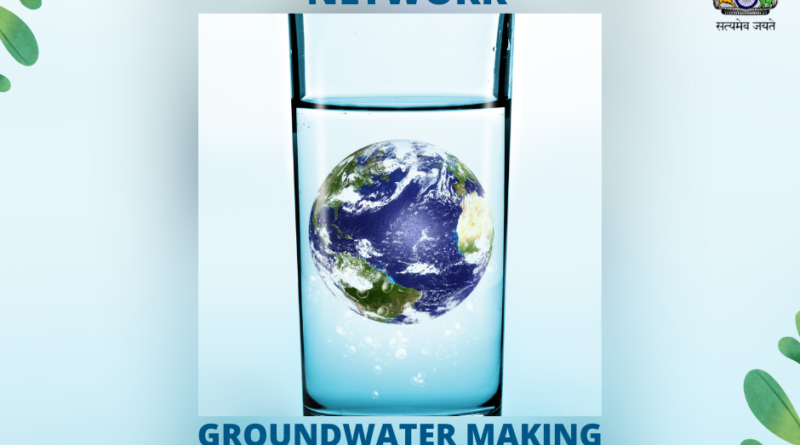Planning Groundwater Sensor Network For Quality and Contamination Monitoring – Ias Banenge
Context
- The Jal Shakti Ministry is developing a plan to install a massive network of groundwater sensors that will continuously monitor the quality and levels of contamination in India’s groundwater.
- The National Water Informatics Centre (NWIC) will have access to the sensors and be able to monitor information relayed down to the taluk level by them.
Relevance:
GS Paper-3: Conservation, Environmental Pollution, and Degradation, Environmental Impact Assessment.
READ MORE – “The IPL Effect: How Cricket’s Premier League is Driving Growth in India”- IAS Banenge
Mains Question
“India is one of the countries with the highest rates of groundwater depletion in the world.” Discuss the Jal Shakti Ministry’s plan to set up a substantial network of groundwater sensors in light of this, as well as any advantages it may have for ensuring sustainable groundwater management. (250 Words)
Current Monitoring System and its Limitations:
- The Central Groundwater Board presently relies on a network of about 26,000 groundwater observation wells that require manual measurement by technicians a few times a year.
- As it only offers a snapshot of the groundwater levels and quality at a specific moment, this system has limitations.
Digital Water Level Recorders:
- As part of the new initiative, approximately 16,000–17,000 digital water level recorders will be linked to the piezometers in the wells.
- Recorders digitally transmit the data that piezometers use to measure groundwater levels.
- In the following three years, the Central Ground Water Authority, which was established under the Environment (Protection) Act of 1986, plans to expand its network from the current 26,000 to about 40,000.
- India will have approximately 67,000 digitally recordable units to monitor groundwater dynamics once they are combined with similar networks owned by other institutions, such as State bodies, agriculture, and meteorology departments.
- The network will offer high-resolution data and make groundwater visible in a similar way to how air quality and meteorological variables like air pressure, moisture, and precipitation are now.
Groundwater Extraction and Contamination in India:
- According to reports, groundwater is used for domestic and drinking needs in 85% of India’s rural areas. In cities with a population of more than 10 lakh, 40% of monitored wells have seen their water levels either remain stable or decrease.
- With the exception of nitrate contamination, which is a result of the use of nitrogenous fertilisers, groundwater contamination in India is primarily “geogenic” (natural) and hasn’t changed significantly over time.
- Parts of 209 districts have been noted to have arsenic contamination, and sections of nearly 409 districts have been confirmed to have fluoride contamination.
- The new initiative will provide ongoing information on groundwater levels, which will be useful in predicting future levels, estimating extraction potential, and figuring out recharge potential.
Potential Benefits of the Groundwater Sensor Network:
- Continuous Monitoring of Groundwater Levels.
- Better groundwater management strategies: o Decision-makers can make more informed decisions about groundwater management strategies when there is constant and current information available on groundwater levels and quality.
- The Jal Shakti Ministry can offer updated advisories that may affect state policies regarding groundwater extraction.
- The Jal Shakti Ministry aims to provide farmers with groundwater forecasts that would be helpful for sowing and updated advisories that can influence groundwater extraction policies by States.
- The majority of this information will be available to the general public, with the exception of water flow data that is governed by international treaties.
- Farmers would gain from continuous monitoring of groundwater quality, which would also help policymakers make choices that can help preserve and replenish groundwater resources.
- A better comprehension of groundwater dynamics: o Ongoing groundwater level monitoring can aid in our understanding of the intricate dynamics of groundwater and the variables that affect it, including changes in land use, climate, and potential for recharge.
- Public access to groundwater data: o Just like air quality and meteorological variables, groundwater can become visible if it is available in a centralised network like the National Water Informatics Centre (NWIC).
- The majority of this information will be available to the general public, with the exception of water flow data that is governed by international treaties.
- Determining areas that are contaminated: Constantly checking the quality of the groundwater can help locate contamination sources, evaluate the success of pollution mitigation efforts, and monitor the development of remediation programmes.
- States will monitor those areas and States more closely for potential groundwater contamination, such as coastal salinity or excessive depletion.
- Regularly checking the quality of the groundwater can assist in taking the corrective measures.
Conclusion:
- The Jal Shakti Ministry’s initiative to set up a network that will continuously measure groundwater quality is a significant step towards water conservation and management in India.
- India has made significant progress towards sustainable groundwater management with the implementation of this extensive network of groundwater sensors.




